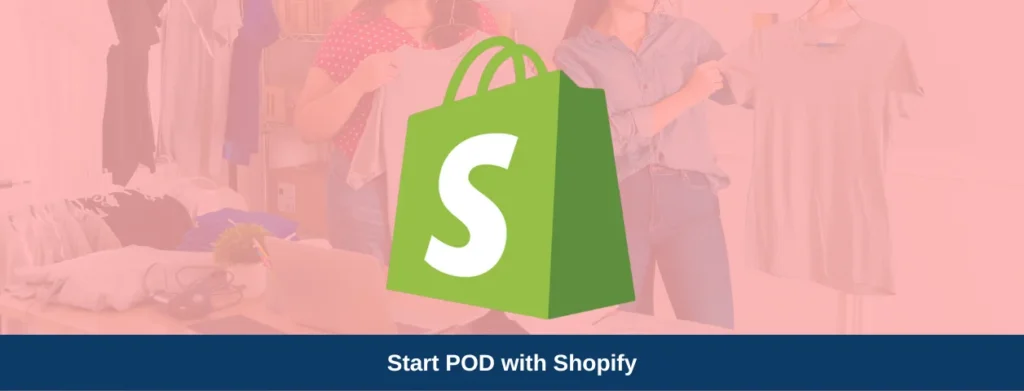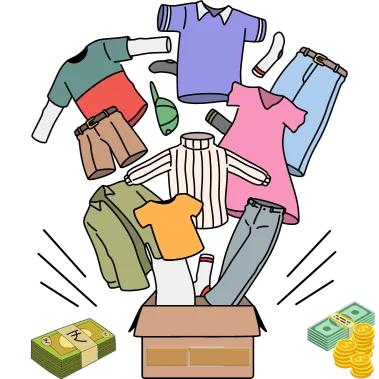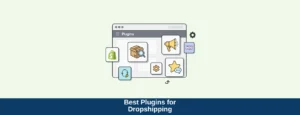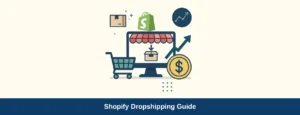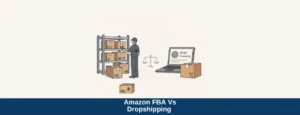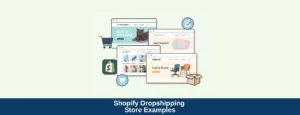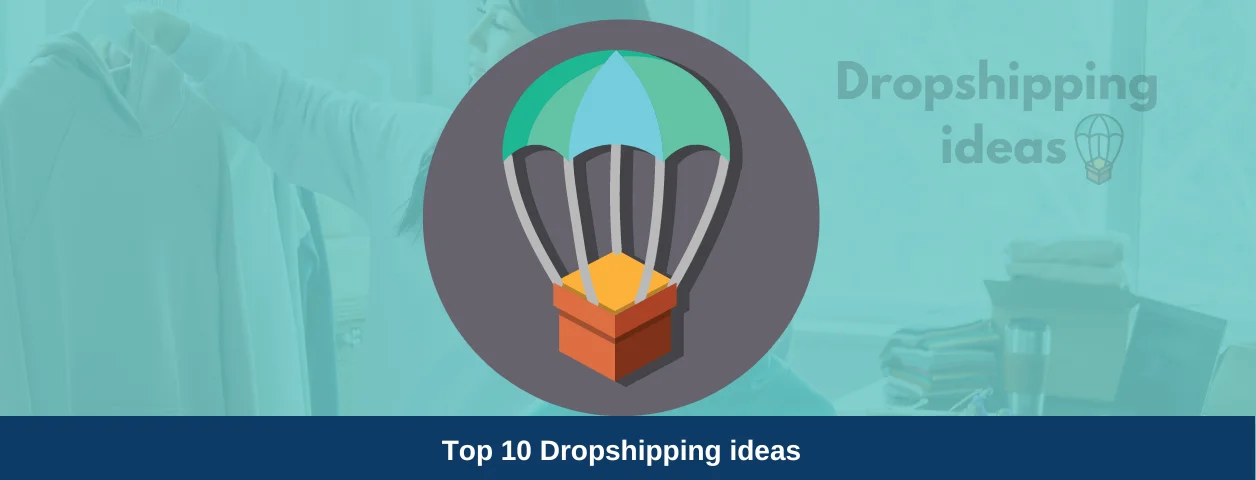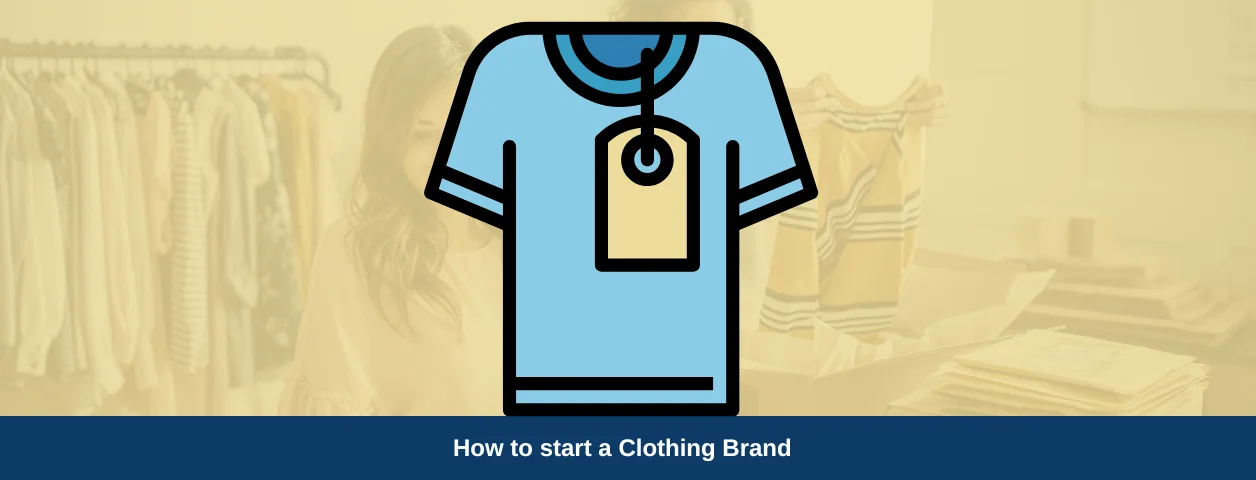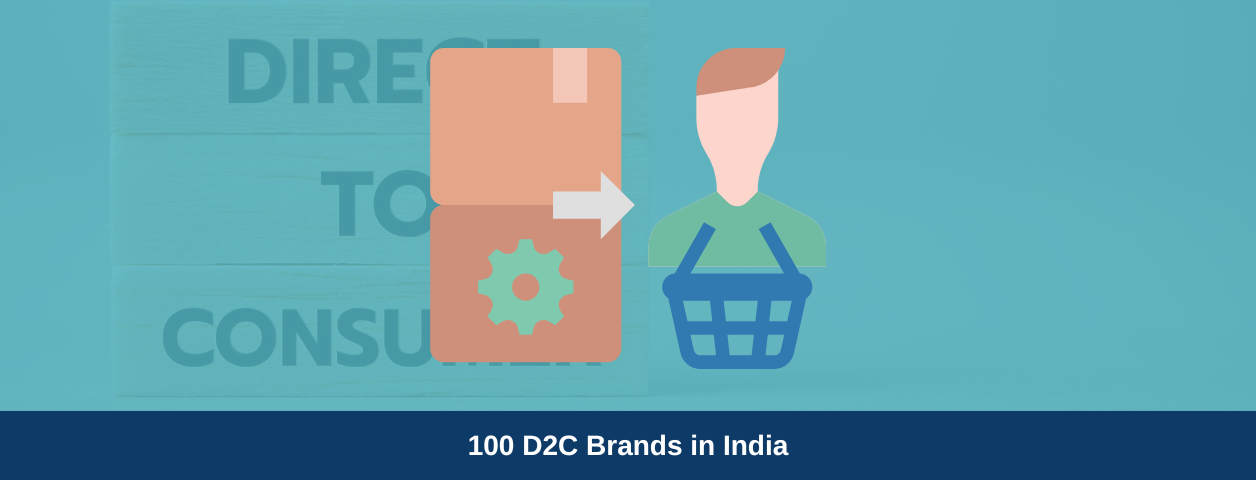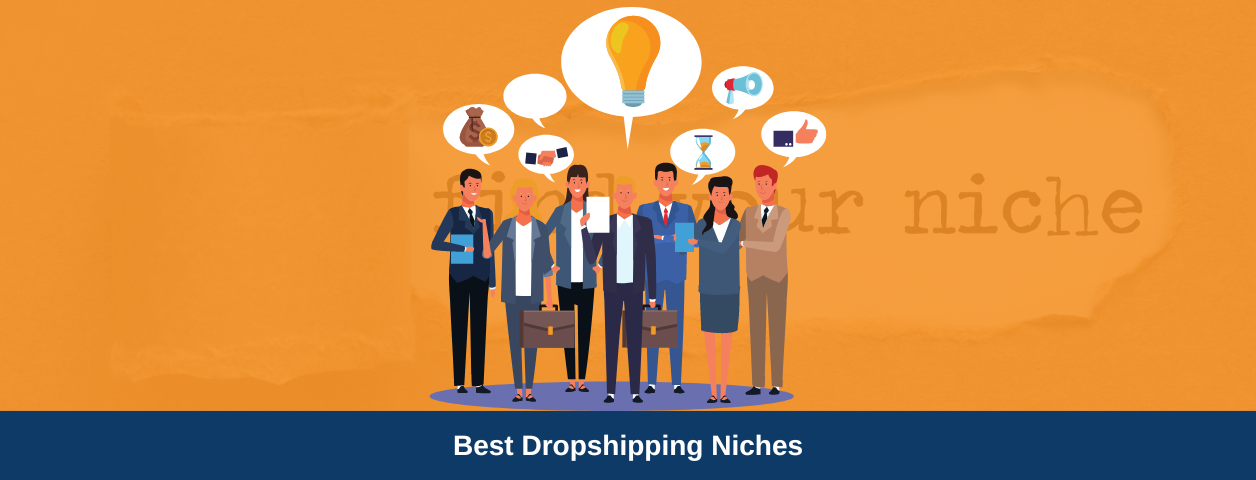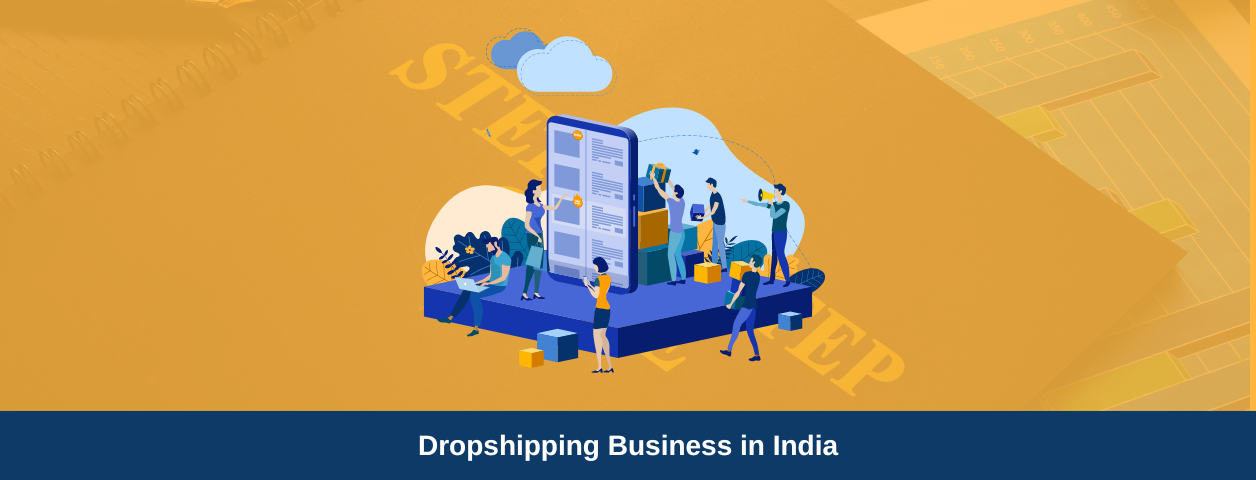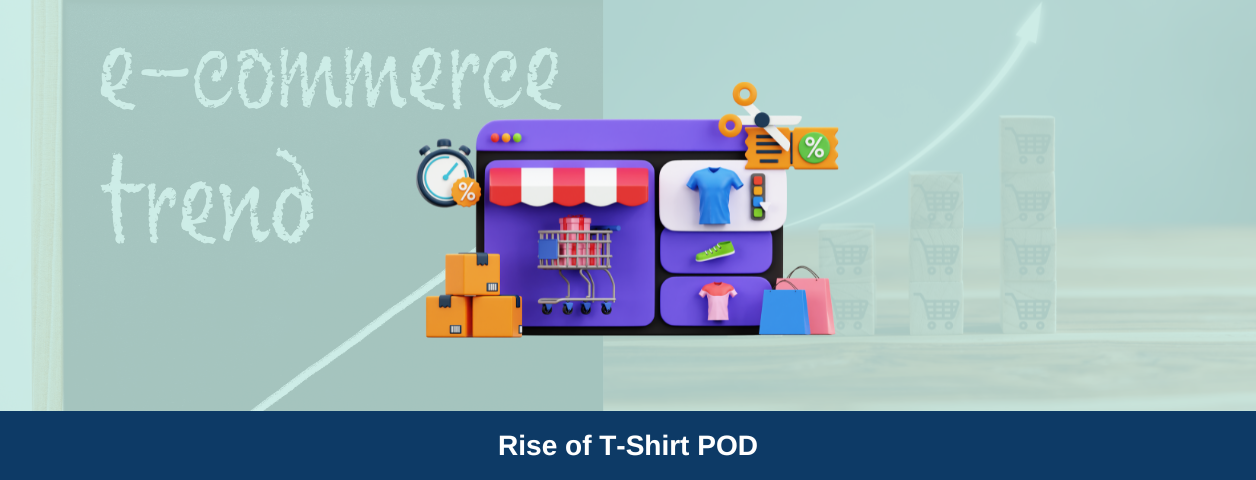Have you ever dreamed of turning your creative ideas into tangible products without the hassle of inventory management and order fulfillment?
It may sound too good to be true, but it’s now possible with the rise of Print on Demand (POD) services. However, with so many options available, it can be overwhelming to know where to start.
Don’t worry!
In this step-by-step guide, we’ll explore how to do Print on Demand with Shopify and help you transform your creative passion into a profitable business.
Let’s get started!
What is Print On Demand?
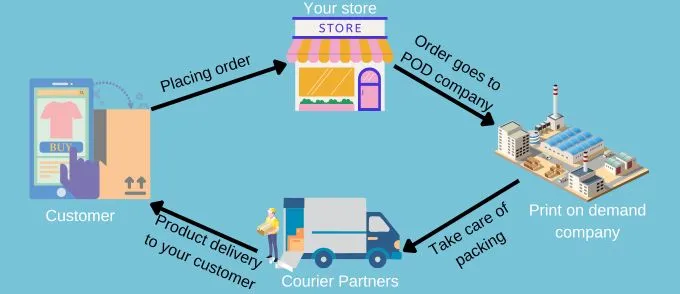
Print on Demand (POD) is a business model that allows you to sell custom-designed products without worrying about minimum order quantities or upfront investments in inventory.
With POD, products are only created or printed when a customer orders.
The best part is that POD services offer a wide range of products like t-shirts, phone cases, and mugs. It is a popular choice for entrepreneurs looking to start a business with low overhead costs.
What is Shopify?
Shopify is an excellent e-commerce platform that allows entrepreneurs to create online stores without requiring technical knowledge.
It provides a user-friendly interface, powerful features, and integrations with various apps and services to help businesses grow. With Shopify, you can manage your inventory, process payments, and customize your storefront according to your brand’s needs.
It offers various pricing plans suitable for businesses of all sizes and industries. Shopify also provides exceptional customer support and extensive documentation to help you maximize the potential of your online store.
What is Shopify Print on Demand?
Shopify’s Print on Demand feature empowers entrepreneurs to sell unique, custom-designed products without the hassle of inventory management or order fulfillment.
This service ensures that products are only created or printed when a customer orders, freeing entrepreneurs to focus on designing and marketing their products.
Shopify’s Print on Demand service offers many products, including t-shirts, phone cases, and more. Entrepreneurs can easily set up their online store and start selling their products in no time with Shopify’s user-friendly interface and powerful features.
How to do you print on demand with Shopify?
Here’s a step-by-step guide to get started.
Step 1: Setup Shopify
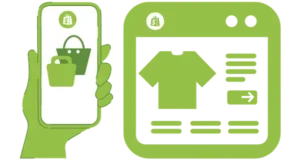
- Go to the Shopify website and click the “Get Started” button.
- Enter your email address, password, and store name.
- Follow the prompts to set up your account and enter your business information.
- Choose a pricing plan that suits your business needs. Shopify offers various pricing plans, including Basic Shopify, Shopify, and Advanced Shopify.
- Customize your online store’s design and layout. Choose a theme that aligns with your brand’s vision and customize it according to your preferences.
- Set up your online store’s payment gateway and shipping options. Shopify offers payment and shipping options, including PayPal, Stripe, and USPS.
- Test your website to ensure that everything is working as intended. Make sure that your website is user-friendly and optimized for mobile devices.
- By following these steps, you can set up your Shopify account.
Step 2: Add a Print On Demand Provider
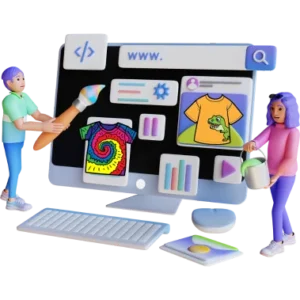
- Research and compare different Print on Demand providers, such as Qikink, Printful, and Printify. Consider their features, pricing, and product offerings.
- Choose a provider that offers the products you want to sell, such as t-shirts, phone cases, and mugs.
- Integrate the Print on Demand provider with your Shopify store. The integration process may vary depending on the provider, but most offer a step-by-step guide to help you.
- Once integrated, the Print on Demand provider will handle your products’ printing, packaging, and shipping.
When choosing a Print on Demand provider, it’s essential to consider factors like product range, quality, pricing, and integration. You can quickly start selling your products by following these steps and selecting the right provider.
Step 3: Create Designs

- Research your target audience and create designs that appeal to their interests and preferences.
- Keep your designs simple and eye-catching. Avoid cluttered designs that are difficult to recognize.
- Use high-quality images and graphics to create professional-looking designs.
- Ensure that your designs align with your brand’s vision and style.
- If you’re not confident in your design skills, consider outsourcing the work to a graphic designer or using design tools such as Canva or Adobe Creative Cloud.
Following these tips, you can create designs to attract customers and set your Print on Demand business apart from competitors.
Step 4: List Products On Shopify
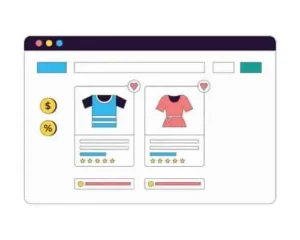
- Select the products you want to sell: Choose the products you want to sell, such as t-shirts, phone cases, or mugs.
- Customize your designs: Upload them to your Shopify store and customize them to your preferences.
- Set prices: Determine the prices for your products based on the production costs and desired profit margin.
- Product descriptions and upload images: Write detailed product descriptions and high-quality images to make your products more appealing to customers.
- Organize your products: Categorize your products to make it easier for customers to find what they want.
- Set up shipping options: Choose the shipping options you want to offer and set the rates accordingly.
- Test your website: Thoroughly test your website to ensure everything works as intended and your products are correctly listed.
Following these tips, you can add your products to your Shopify store and sell them to customers.

Step 5: Launch Your Store
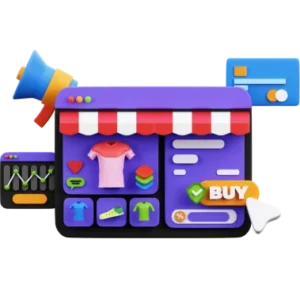
- Make sure your website looks professional and user-friendly: Thoroughly test it to ensure it looks professional and easy to navigate.
- Optimize your website for mobile devices: Since many customers use their mobile devices to shop online, optimizing your website for mobile is essential.
- Ensure your payment gateway is working correctly: Test it to ensure it’s working correctly and that customers can easily make payments.
- Develop a launch plan: Create a launch plan that includes social media posts, email campaigns, and other marketing efforts to promote your store.
- Set up your Google Analytics account: Use Google Analytics to track your website’s traffic and sales.
- Be prepared to handle customer inquiries: Prepare to handle customer inquiries and provide excellent customer service to build long-term relationships with your customers.
Following these tips, you can launch your Shopify store and sell your products to customers. Good luck!
Step 6: Create Social Media Handles
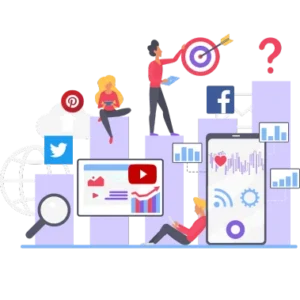
By creating social media handles, you can increase your brand’s visibility and attract more customers to your Shopify store.
Ensure your handles align with your brand’s style and vision, and post regularly to keep followers engaged. Use social media analytics to track your performance and optimize your strategy accordingly.
Step 7: Advertise & Scale
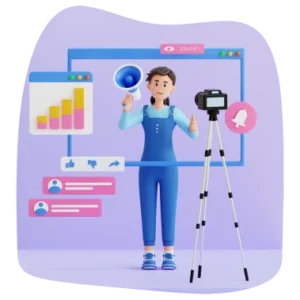
- Reach your target audience: Use paid marketing channels like Google Ads and social media ads to reach your target audience. Also, use organic marketing channels like email marketing and social media to promote your products.
- Improve your sales: Keep track of your sales and customer feedback to identify areas for improvement and make necessary adjustments.
- Expand your product range: Consider expanding your product range to attract more customers and increase sales.
- Optimize your website: Improve your website’s visibility and attract more traffic by optimizing it for search engines.
- Partner with influencers: Partner with influencers in your niche to promote your products to their followers.
Following these tips, you can advertise and scale your Print on Demand business to attract more customers and increase sales.
Step 8: Collect Customer Feedback
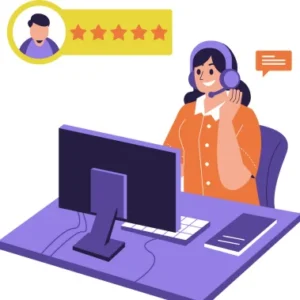
- Encourage customers to leave reviews: Ask your customers to leave reviews and ratings on your website and social media handles.
- Send surveys: Email your customers to collect feedback on your products and customer experience.
- Analyze feedback: Look for areas of improvement by analyzing customer feedback.
- Respond to feedback: Address any concerns your customers may have by responding to their feedback promptly.
- Use feedback to improve: Use customer feedback to improve your products and customer experience.
By following these tips, you can collect valuable customer feedback and provide excellent customer service to your customers.
Conclusion
Starting a business with low overhead costs is more accessible with Print on Demand with Shopify. This option allows entrepreneurs to create custom-designed products without worrying about inventory management or order fulfillment.
Following the step-by-step guide in this article, setting up your Shopify account and integrating it with a Print on Demand provider will be a breeze. With the right strategies and product offerings, your Print on Demand business can flourish in today’s e-commerce market.
Read more
- The Ultimate Guide to Print-on-Demand Dropshipping in India: Start Your E-Commerce Venture Today!
- Scaling Your Print-on-Demand Business on Shopify: Key Considerations
- How To Select Profitable Print-on-Demand Product Sell Online in India
- Your Ultimate Guide to Shopify Dropshipping: Building a Profitable Online Store with Minimal Risk
- 10 Tips To Create Great Print On Demand Designs For Your Online Store
Frequently Asked Questions
What is Print on Demand, and how does it work with Shopify?
With Print on Demand, entrepreneurs can sell custom-designed products without worrying about minimum order quantities or upfront investments. When a customer orders, the products are printed, freeing entrepreneurs from inventory management and order fulfillment. Shopify offers a Print on Demand service that helps entrepreneurs streamline the process.
Why choose Shopify for a Print on Demand business?
Shopify is an e-commerce platform offering robust features, app and service integrations, and a user-friendly interface. Entrepreneurs can use Shopify’s Print on Demand service to sell unique, custom-designed products without worrying about inventory management or order fulfillment. This service is ideal for POD.
What are the basic steps to start a Print on Demand store on Shopify?
To start a Print on Demand store on Shopify, follow these basic steps: Set up a Shopify account, choose a Print on Demand provider like Qikink, Printful, or Printify, integrate the chosen provider with your Shopify store, create designs for your products, and start selling.
How can I source and create custom designs for Print on Demand products?
To create custom designs for Print on Demand products, use various online tools and resources such as Adobe Photoshop, Canva, or GIMP. Research your target audience and create designs that align with their interests and preferences.
Are there specific apps or integrations recommended for Print on Demand on Shopify?
Recommended apps and integrations for Print on Demand on Shopify include Qikink, Printify, and Printful. These apps provide products, services, design templates, order fulfillment, and shipping. Choose an app that suits your business needs and integrates seamlessly with your Shopify store.

